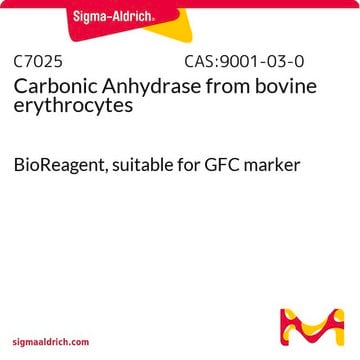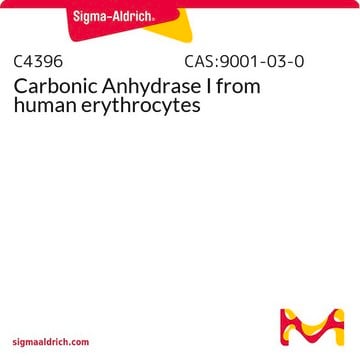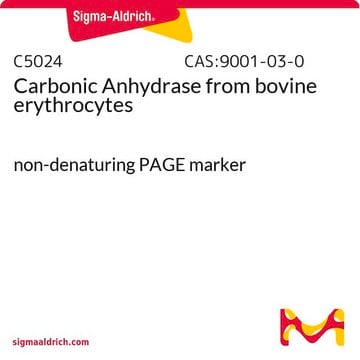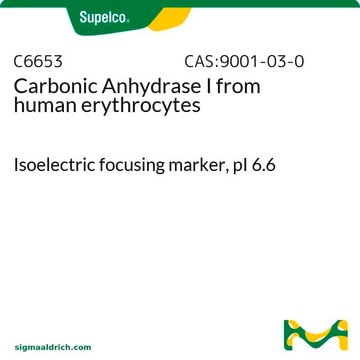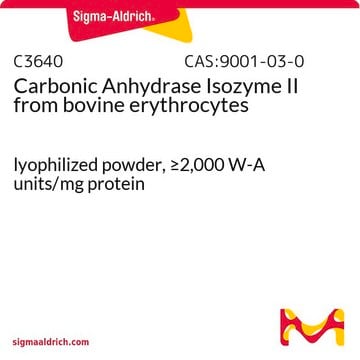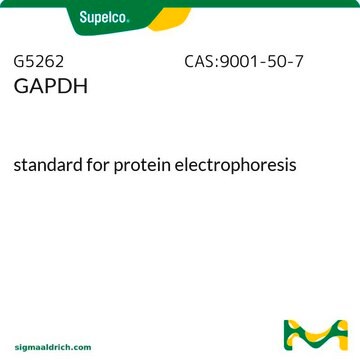C2273
Anhydrase carbonique from bovine erythrocytes
For use as a marker in SDS-PAGE
Synonyme(s) :
Déshydratase carbonique, Hydrolase de carbonate
About This Item
Produits recommandés
Source biologique
bovine erythrocytes
Niveau de qualité
Forme
powder
Poids mol.
~29 kDa
Conditionnement
vial of 5 mg
Température de stockage
2-8°C
Vous recherchez des produits similaires ? Visite Guide de comparaison des produits
Catégories apparentées
Description générale
Application
- as a component of nine-protein mixture for the comparative proteomic mass spectrometry analysis of bovine brain samples
- as a molecular marker in gel filtration chromatography
- as a standard protein to test the recovery of CMA/20 microdialysis probe
Actions biochimiques/physiologiques
Définition de l'unité
Mention d'avertissement
Danger
Mentions de danger
Conseils de prudence
Classification des risques
Resp. Sens. 1
Code de la classe de stockage
11 - Combustible Solids
Classe de danger pour l'eau (WGK)
WGK 3
Point d'éclair (°F)
Not applicable
Point d'éclair (°C)
Not applicable
Équipement de protection individuelle
Eyeshields, Gloves, type N95 (US)
Certificats d'analyse (COA)
Recherchez un Certificats d'analyse (COA) en saisissant le numéro de lot du produit. Les numéros de lot figurent sur l'étiquette du produit après les mots "Lot" ou "Batch".
Déjà en possession de ce produit ?
Retrouvez la documentation relative aux produits que vous avez récemment achetés dans la Bibliothèque de documents.
Les clients ont également consulté
Notre équipe de scientifiques dispose d'une expérience dans tous les secteurs de la recherche, notamment en sciences de la vie, science des matériaux, synthèse chimique, chromatographie, analyse et dans de nombreux autres domaines..
Contacter notre Service technique

